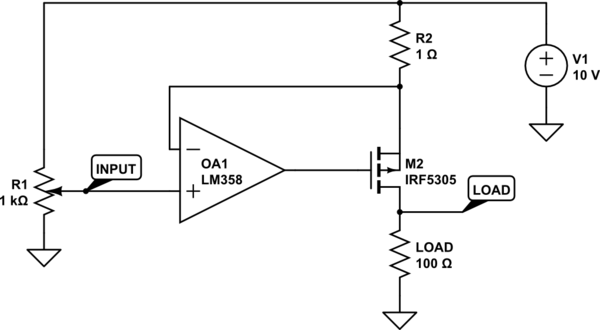Why does this work?

simulate this circuit – Schematic created using CircuitLab
But this doesn't.

In the second schematic, V2 is adjustable.
Is there a better (not very complicated) way to make an adjustable current source where the LOAD is between Source (transistor) and GND (not with the sense resistor connected to GND and the LOAD on the high-side)?
Does the op-amp have to be powered with a dual power supply?
